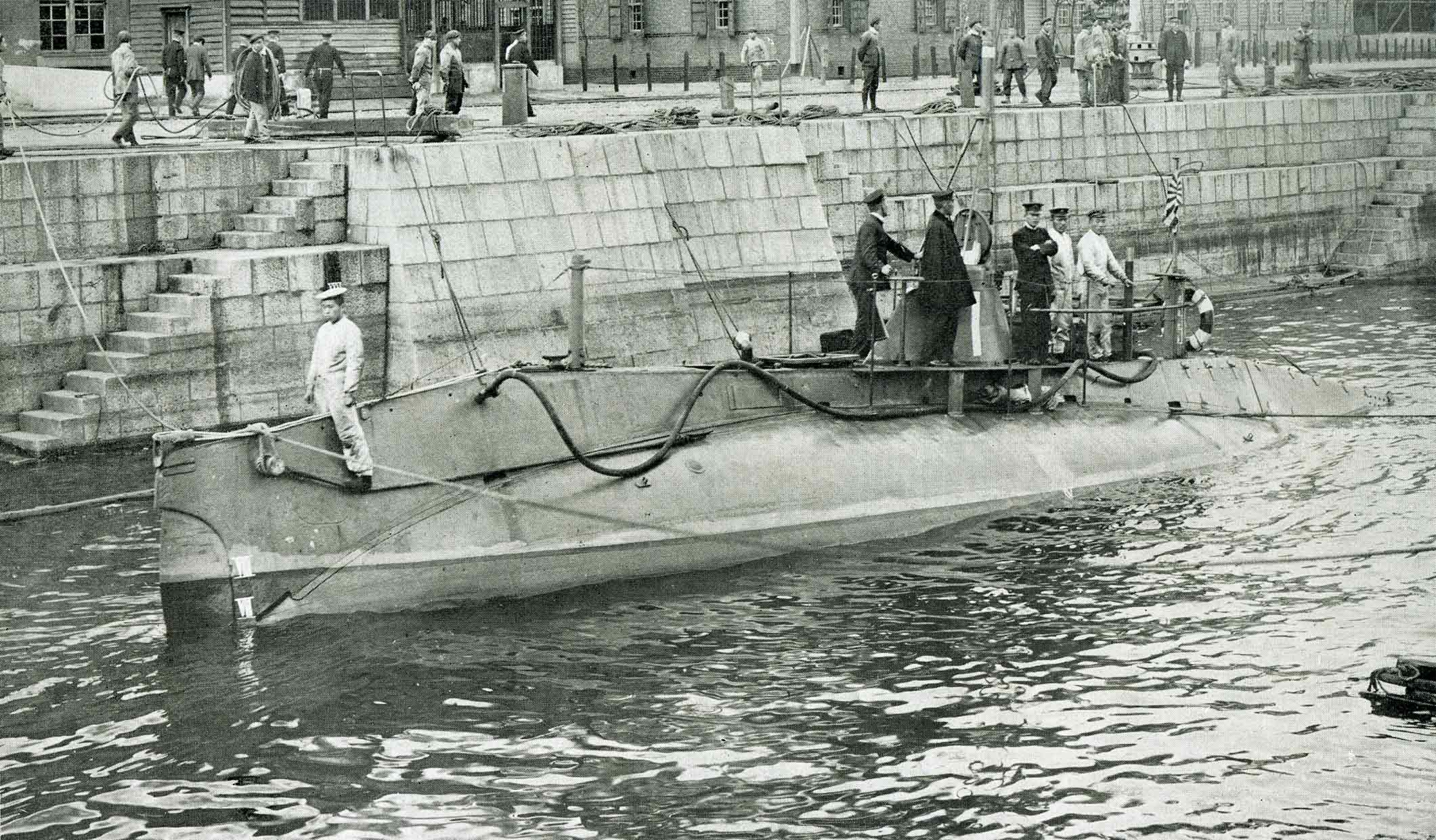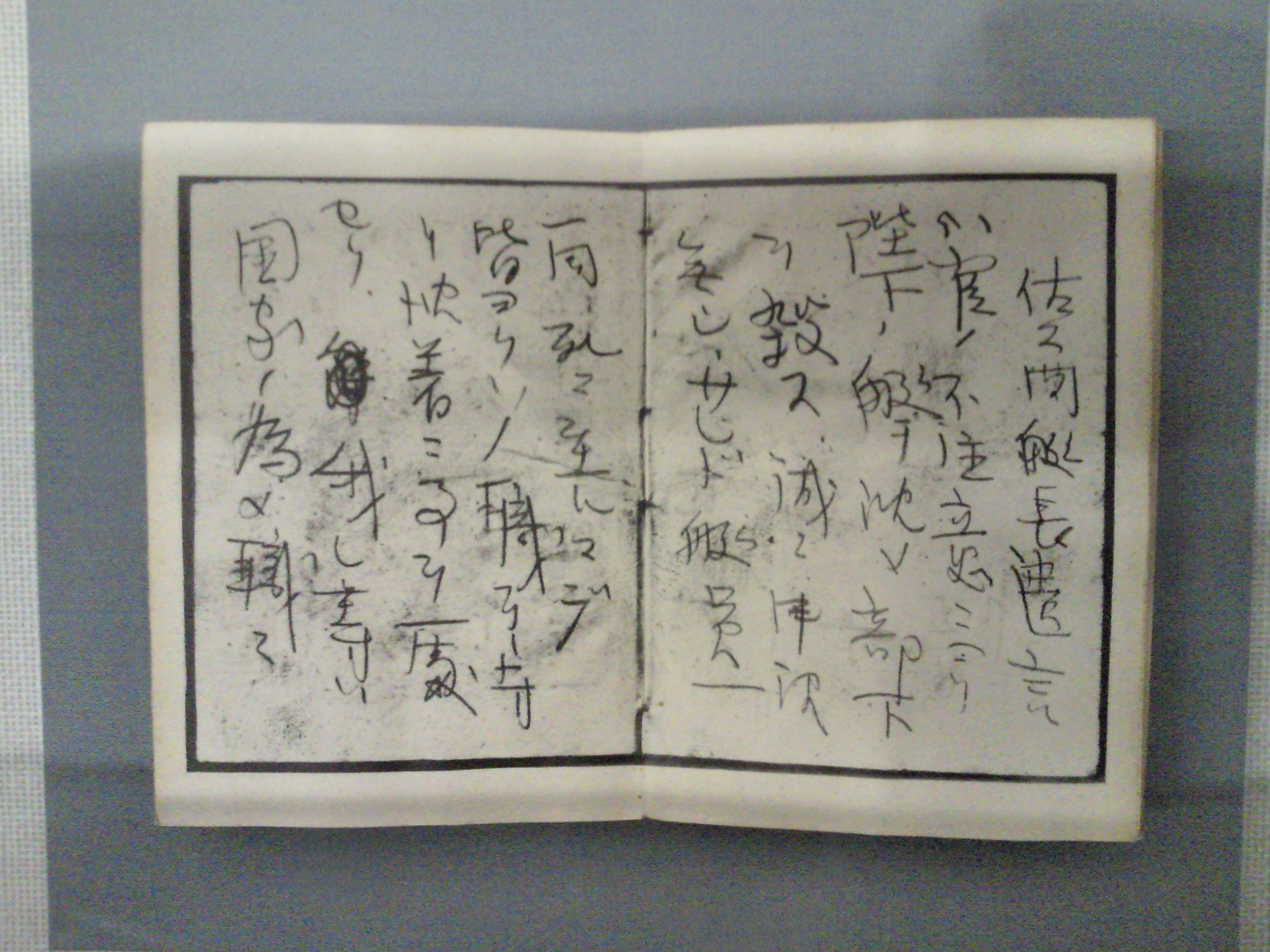|
Submarines Of The Imperial Japanese Navy
Imperial Japanese Navy submarines originated with the purchase of five Holland type submarines from the United States in 1904. Japanese submarine forces progressively built up strength and expertise, becoming by the beginning of World War II one of the world's most varied and powerful submarine fleets. Origins The Imperial Japanese Navy (IJN) acquired its first submarines during the Russo-Japanese War on 12 December 1904 where they arrived in sections at the Yokohama dockyards. The vessels were purchased from the relatively new American company, Electric Boat, and were fully assembled and ready for combat operations by August 1905.Jentschura p. 160 However, hostilities with Russia were nearing its end by that date, and no submarines saw action during the war. The submarines that Electric Boat sold to Japan were based on the Holland designs, known as Holland Type VIIs similar to the American s. The five imported Hollands were originally built at Fore River Ship and Engine Comp ... [...More Info...] [...Related Items...] OR: [Wikipedia] [Google] [Baidu] |
USS Holland (SS-1)
USS ''Holland'' (SS-1) was the United States Navy's first submarine, although not its first underwater watercraft, which was the 1775 Turtle (submersible), submersible ''Turtle''. The boat was originally laid down as ''Holland VI'' at the Crescent Shipyard of Elizabeth, New Jersey for John Philip Holland's Holland Torpedo Boat Company, and Ceremonial ship launching, launched on 17 May 1897. She was acquired by the USN on 11 April 1900 and commissioned on 12 October 1900, Lieutenant (navy), Lieutenant H. H. Caldwell commanding.Friedman, p. 286 Design and construction ''Holland'' was built at former Navy Lieutenant Lewis Nixon (naval architect), Lewis Nixon's Crescent Shipyard of Elizabeth, New Jersey for John Holland's Holland Torpedo Boat Company, which became the General Dynamics Electric Boat, Electric Boat company in 1899. The vessel was built under the supervision of John Philip Holland, who designed the vessel and her details. ''Holland''s keel was laid at Nixon's Cresce ... [...More Info...] [...Related Items...] OR: [Wikipedia] [Google] [Baidu] |
Yokosuka Naval Arsenal
was one of four principal naval shipyards owned and operated by the Imperial Japanese Navy, and was located at Yokosuka, Kanagawa, Yokosuka, Kanagawa Prefecture on Tokyo Bay, south of Yokohama. History In 1866, the Tokugawa shogunate government established the ''Yokosuka Seisakusho'', a military arsenal and naval base, with the help of o-yatoi gaikokujin, foreign engineers, including the France, French naval architect Léonce Verny. The new facility was intended to produce modern, western-style warships and equipment for the Tokugawa navy. The construction of the arsenal was an important first step for the modernization of Japan's industry. Modern buildings, an aqueduct (water supply), aqueduct, foundry, brick factories, and technical schools to train Japanese technicians were established. After the Boshin War and the Meiji Restoration, the new Meiji government took over control of the facility in 1871, renaming it the ''Yokosuka Zosenjo'' (Yokosuka Shipyards). The first dry ... [...More Info...] [...Related Items...] OR: [Wikipedia] [Google] [Baidu] |
Kure Naval District
was the second of four main administrative districts of the pre-war Imperial Japanese Navy. Its territory included the Inland Sea of Japan and the Pacific coasts of southern Honshū from Wakayama to Yamaguchi prefectures, eastern and northern Kyūshū and Shikoku. The area of the Kure Naval District encompassed Hashirajima Anchoring Area located at the south end of Hiroshima Bay, 30-40 kilometers southwest of Kure. When not in need of repairs ships usually anchored in this area to free up pier space at Kure. Hashirajima was also a major staging area for fleet operations. Tokuyama port, was also part of Kure Naval District, and had the largest fuel depot in the Japanese Navy. History The location of Kure within the sheltered Inland Sea of Japan was recognized of strategic importance in controlling the sea lanes around western Japan by the Meiji government and early Imperial Japanese Navy. With the formation of the navy in 1886, Japan was divided into five naval districts fo ... [...More Info...] [...Related Items...] OR: [Wikipedia] [Google] [Baidu] |
Tsutomu Sakuma
was a career naval officer in the Imperial Japanese Navy, and a pioneer submarine commander, known primarily as the commanding officer during the sinking of Submarine ''No.6''. Biography Born in Mikata District, Fukui, Mikata District Fukui prefecture (present-day city of Wakasa, Fukui), to the family of a kannushi, Shinto priest, Sakuma graduated from the 29th class of the Imperial Japanese Naval Academy in 1901. One of his classmates was the future Ministry of the Navy of Japan, Navy Minister and Prime Minister of Japan Mitsumasa Yonai. He was assigned to the cruiser shortly before the start of the Russo-Japanese War. He subsequently served with the 15th Torpedo Boat Flotilla, and was on board the cruiser during the Battle of Tsushima on May 26, 1905. After completing the torpedo warfare school, Sakuma served on the submarine tender and was later a squad leader on the . He started to get involved in the submarine service in 1906, first taking the command of the Submarines of ... [...More Info...] [...Related Items...] OR: [Wikipedia] [Google] [Baidu] |
Hiroshima Bay
is a bay in the Inland Sea, Japan.Nussbaum, Louis-Frédéric. (2005). "Hiroshima Wan" in . Administratively, the bay is divided between Hiroshima and Yamaguchi Prefectures. The bay's shore is a Ria. Its surface area is about , with a mean depth of . Municipalities *Kure, Hiroshima * Saka, Hiroshima * Kaita, Hiroshima * Fuchū, Hiroshima *Hiroshima * Hatsukaichi, Hiroshima *Ōtake, Hiroshima * Etajima, Hiroshima * Waki, Yamaguchi * Iwakuni, Yamaguchi Major rivers * Kyōbashi River * Motoyasu River * Ōta River * Oze River * Tenma River Major islands * Kanawajima * Tōgejima * Ninoshima *Enoshima *Etajima * Ōnasabijima ( Ōnasamitō) * Ogurokamijima * Nomijima ** West Nomijima ** East Nomijima * Ōkurokamishima * Kurahashijima * Nasakejima * Atatajima * Inokojima * Itsukushima * Nagashima * Okinoshima * Kabutojima Trivia Jaco Pastorius once threw his "Bass of Doom" ( Fender Jazz Bass) into the Hiroshima Bay. References External links * Hiroshima is the capi ... [...More Info...] [...Related Items...] OR: [Wikipedia] [Google] [Baidu] |
Kure
is a city in the Hiroshima Prefecture, Japan. , the city had an estimated population of 208,024 in 106,616 households and a population density of 590 persons per km2. The total area of the city is . With a strong industrial and naval heritage, Kure hosts the second-oldest naval dockyard in Japan and remains an important base for the Japan Maritime Self-Defence Force. History The area of Kure is part of ancient Aki Province, and the port of Kure was an important seaport for Hiroshima Domain in the Edo period. The Kure Naval District was first established in 1889, leading to the construction of the Kure Naval Arsenal and the rapid growth of steel production and shipbuilding in the city. Kure was formally incorporated on October 1, 1902. From 1889 until the end of the Pacific War, the city served as the headquarters of the Kure Naval District. Kure dockyards recorded a number of significant engineering firsts including the launching of the first major domestically built c ... [...More Info...] [...Related Items...] OR: [Wikipedia] [Google] [Baidu] |
Kobe
Kobe ( ; , ), officially , is the capital city of Hyōgo Prefecture, Japan. With a population of around 1.5 million, Kobe is Japan's List of Japanese cities by population, seventh-largest city and the third-largest port city after Port of Tokyo, Tokyo and Port of Yokohama, Yokohama. It is located in the Kansai region, which makes up the southern side of the main island of Honshu, Honshū, on the north shore of Osaka Bay. It is part of the Keihanshin metropolitan area along with Osaka and Kyoto. The Kobe city centre is located about west of Osaka and southwest of Kyoto. The earliest written records regarding the region come from the , which describes the founding of the Ikuta Shrine by Empress Jingū in AD 201.Ikuta Shrine official website – "History of Ikuta Shrine" (Japanese) [...More Info...] [...Related Items...] OR: [Wikipedia] [Google] [Baidu] |
Japanese Type 6 Submarine
The was the first class of submarines of the Imperial Japanese Navy built domestically in Japan. Consisting of two vessels, these submarines were highly modified versions of ''Holland''-class vessels designed in the United States. Background During the Russo-Japanese War, the Japanese government had purchased five modified ''Holland''-class submarines from the Electric Boat Company's Fore River Shipyards in Quincy, Massachusetts.Jentschura p. 160 These vessels, known as the Type 1 class were delivered to Japan in knock-down form, and re-assembled at the Yokosuka Naval Arsenal. However, simultaneously, the Japanese government had obtained copies of the blueprints for the ''Holland''-class submarines, and had assigned Kawasaki Dockyards in Kobe the task of building similar vessels in Japan. Construction and operational history Kawasaki built two boats (Hulls No. 6 and 7), with the help of two American engineers, Chase and Herbert, who had been assistants to John Philip Holland ... [...More Info...] [...Related Items...] OR: [Wikipedia] [Google] [Baidu] |
Torpedo
A modern torpedo is an underwater ranged weapon launched above or below the water surface, self-propelled towards a target, with an explosive warhead designed to detonate either on contact with or in proximity to the target. Historically, such a device was called an automotive, automobile, locomotive, or fish torpedo; colloquially, a ''fish''. The term ''torpedo'' originally applied to a variety of devices, most of which would today be called mines. From about 1900, ''torpedo'' has been used strictly to designate a self-propelled underwater explosive device. While the 19th-century battleship had evolved primarily with a view to engagements between armored warships with large-caliber guns, the invention and refinement of torpedoes from the 1860s onwards allowed small torpedo boats and other lighter surface vessels, submarines/submersibles, even improvised fishing boats or frogmen, and later light aircraft, to destroy large ships without the need of large guns, though somet ... [...More Info...] [...Related Items...] OR: [Wikipedia] [Google] [Baidu] |







